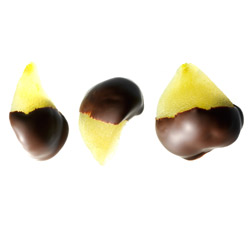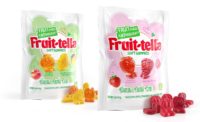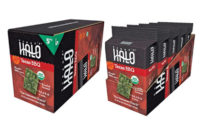The fact that more and more Americans eat smaller portions of food more frequently throughout the day — otherwise known as snacking —has been well documented. The type of snacks American are consuming, however, appears to be changing.

|
According to Healthy-Ingredient Snacks in the U.S., a just released report from market research firm Packaged Facts in Rockville, Md., many adult consumers on making sure that the foods they — and their kids — eat pass nutritional muster. These consumer trends are converging to produce a new generation of snackers attracted by the “health halo” around healthy-ingredient snacks.
David Sprinkle, the research director for Packaged Facts, adds that “The market is characterized by a continuous flow of new products based on inventive formats, shapes, and ingredients, as well as exotic fruits and vegetables, bold contrasts of sweet and salty, and novel and bold amalgamations of spices and heat from around the world.”
The Packaged Facts report points out that marketers of healthy-ingredient snacks take full advantage of the health-halo effect. As a result, consumers often perceive that food products with certain claims, such as “organic” and “natural,” are healthier or safer for them. In addition, to set them apart from the fray, healthy-ingredient snacks commonly carry labeling such as non-GMO or organic. They also often are labeled more subjectively as being “local,” “pure,” “real,” “natural,” “safe,” “clean,” “minimally processed” and “allergy-friendly.”
One of the key findings of Packaged Facts’ research is that the brightest and shiniest health halos generally encircle healthy-ingredient snacks coming from small, boutique marketers. These often are family-run and given to cause marketing. They frequently use locally sourced ingredients and almost always highlight their concern for the global environment as well as the health and well-being of their customers.

|
The products marketed by these healthy-ingredient snacks marketers appear all the more safe, healthy and authentic because their founders have a deeply personal story to tell about why they got into the snacks business. These entrepreneurs are passionate about their products and are able to leverage their enthusiasm with consumers.
Consequently, the report’s authors emphasize that one of the challenges facing the mega-marketers dominating the packaged foods industry will be to find ways to make consumers trust the healthy-ingredient snacks marketed by multinational corporations to the same extent that consumers feel confident in the products marketed by small, personalized firms.
For additional information, visit www.MarketResearch.com or www.packagedfacts.com.




